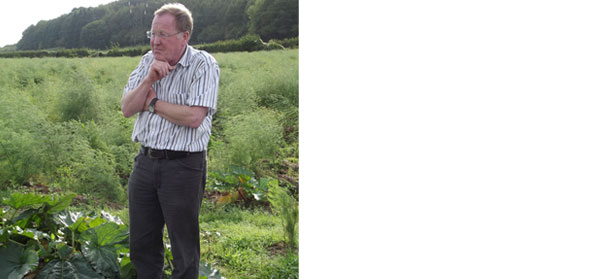

Nov 18, 2011U.K. grower creates asparagus market
If John Chinn has his way, he’ll be supplying the United Kingdom with asparagus from February to November – with the help of Haygrove Tunnels.
Already, he’s bringing in double the wholesale price for asparagus he grows in the off-season. During the main season, he brings in about 10 GBP per kilogram for asparagus tips. In the autumn season, that doubles to 20 GBP per kilogram.
“Asparagus tips are worth two-and-a-half times the rest of the asparagus,” Chinn said.
From February through mid-April, Chinn said they can basically name their own price, and the supermarkets – and consumers – will pay it. What’s more, his asparagus is selling in stores at exactly twice the price of Peruvian asparagus, he said.
“If you can stick a Union Jack on fresh produce, people will buy it,” he said. “And my opinion is that people will pay for quality if we can produce it.”
Chinn estimates that his operation, Cobrey Farms, grows 27 percent of the U.K.’s asparagus crop, with 1,000 acres in the ground – 64 acres of those under Haygrove high tunnels. He planted his first asparagus in 2003. The farm also grows blueberries, rhubarb, potatoes and some grains. In terms of profit, however, asparagus is his key crop.
“By putting the Haygrove tunnel over the asparagus, basically we’re trying to recreate Peru – make it hot and keep the water off,” Chinn said.
The Cobrey Farms’ team is measuring brix every week by taking 20 samples per designated plot. They track brix to see if they’re able to get a continual crop of asparagus off one field.
“The hope is to be harvesting in the third week of February, and hope to be still harvesting in November. Whether those are the same tunnels or different tunnels, you’ll have to come back and ask me,” Chinn said. “The agronomist thinks our sugar levels will be too low.”
A learning curve
Chinn said he’s still in the learning phases of growing asparagus in tunnels, such as finding just the right ventilation system for asparagus, experimenting with low tunnels within high tunnels, figuring out proper irrigation management and measuring carbohydrate levels to see the effects of the tunnels on the asparagus.
To figure out the proper irrigation level, Chinn said the team starts with “theoretical calculations” and sets the trickle to supply that. The team goes around the various plots to measure soil moisture, adjusting the irrigation system as needed.
“With asparagus, we don’t irrigate every day because we like to let the roots work a little bit,” he said. “Wet it up, let it dry and repeat every couple of days.”
Chinn and other U.K. growers are facing similar issues as growers in the United States, such as tighter regulations for crop protection and water use. Plus, since no one’s really grown asparagus in tunnels before Chinn, there’s not a lot of understanding among regulators about what he is doing.
For instance, weeding is done by hand because “there are no chemicals we can use inside poly tunnels because nobody’s grown asparagus in poly tunnels.” They also manage pests, such as asparagus beetle, by hand – going through the tunnels and pinching them off.
“There’s an awful lot to learn,” he said.
Chinn’s latest experimental plot includes a custom-made low tunnel with a unique ventilation system that has holes at the top to let air move. Those holes are covered with another layer of plastic, with vents running down the sides of that layer to let air in and out. When it’s warm the two layers expand, allowing air to flow between them. When it’s cooler, the two levels contract, keeping the warmer air inside the tunnel.
Cornering the market
Since off-season, U.K.-grown asparagus is a such novel idea, not many supermarkets were aware of it. But Marks & Spencer, Chinn said, have worked to help him develop that market.
“Other supermarkets are already ringing us up to see when they can get some,” he said. “The supermarkets have a vested interest in keeping the same products on the shelves as long as possible, so they must be behind you.”
The packs for Marks & Spencer are sold as “spears,” “extra fine” and “tips.” The tips make up about 30 percent of the sales; extra fine makes up 20 percent of sales; and spears make up about 50 percent.
So far, the relationship with Marks & Spencer has been beneficial.
“We’ve been selling out,” Chinn said. “We can’t supply enough.”
By Kimberly Warren, Associate Publisher














